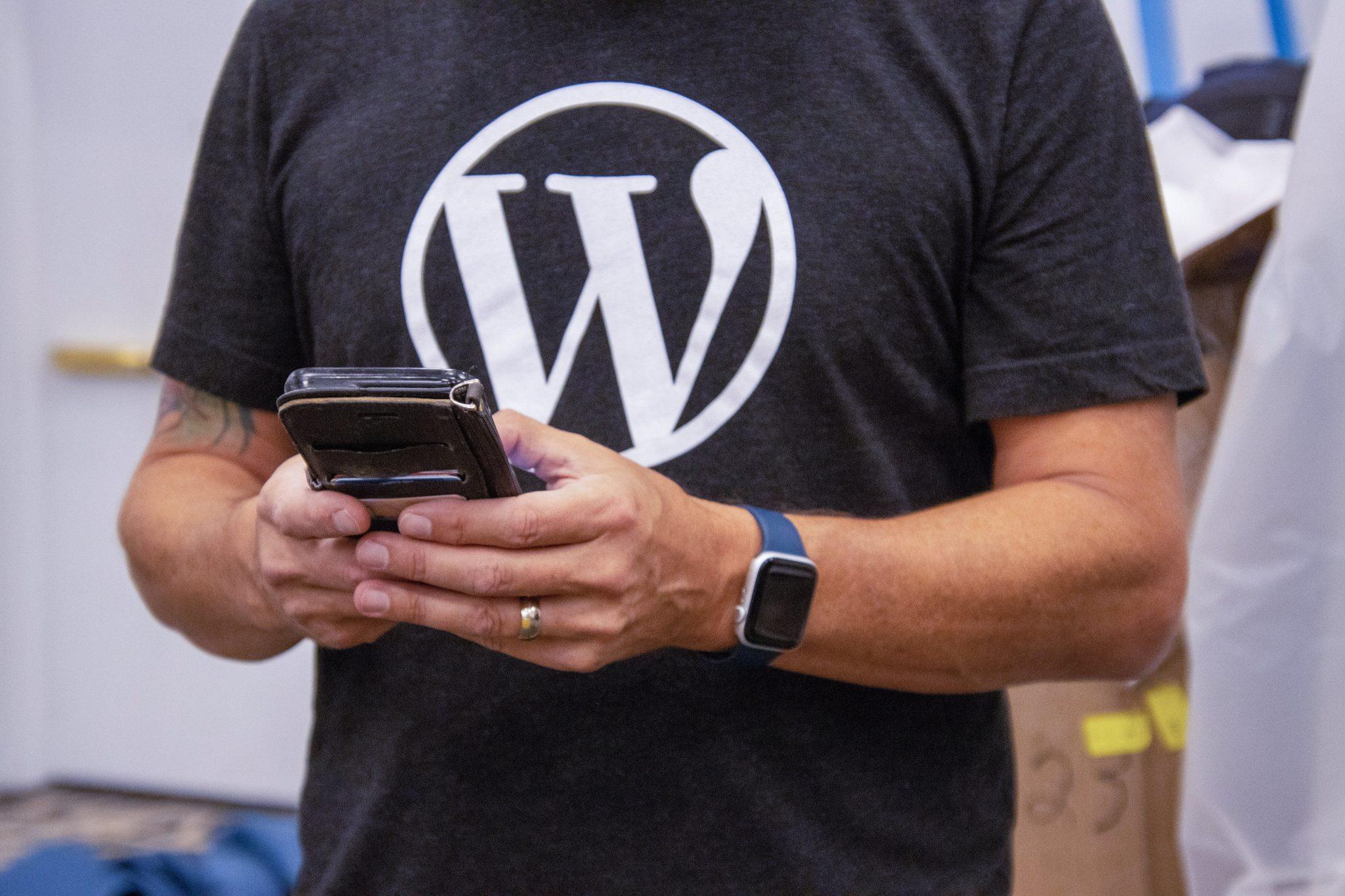How a Mobile-Optimized Design Impacts User Experience
Think about the last time you visited a website on your mobile phone. How was the experience? If you’re like most people, it probably wasn’t great. Small text, crammed content, and links that are impossible to click on are just a few of the common problems.
Now, imagine if that same website had a mobile-optimized design. The text would be easy to read, the content would be nicely spaced out, and the links would be large and easy to click on.


Mobile devices are everywhere. In fact, as of 2019, there are more mobile devices in the world than there are people. This trend is only going to continue as technology becomes more and more accessible. With this in mind, it’s important to think about how mobile-optimized design affects user experience.
User experience is the way a person feels when using a product, system, or service. It encompasses everything from how easy something is to use, to how satisfying it is. Good user experience is essential for any business that wants to keep its customers happy and engaged.
A mobile-optimized design is one that has been specifically created to be used on mobile devices such as smartphones and tablets. This type of design takes into account the smaller screen sizes and touch-based input of these devices.
There are a few key things to keep in mind when designing for mobile devices:
– Simplicity is key. Mobile users often have less time and patience than desktop users, so it’s important to make sure your design is easy to understand and use.
– Touch-based input should be taken into account. Buttons and links should be large enough to be easily pressed with a finger, and form fields should be easy to fill out without having to zoom in.
– Screen size should be taken into account. Images and text should be sized appropriately for smaller screens, and the layout should make use of the entire screen real estate.
– Load times are important. Mobile users are often on the go, so it’s important to make sure your pages load quickly on 3G and 4G networks.
Designing for mobile devices can seem like a daunting task, but it’s important to keep in mind the needs of your users. By keeping these key factors in mind, you can create a mobile-optimized design that will improve user experience and keep your customers happy.
What is a mobile-optimized design?
A mobile-optimized design is a design that has been created with the intention of providing an optimal experience for users on mobile devices. This can include optimizing for smaller screens, touchscreens, and slower internet connections.
One of the most important aspects of a mobile-optimized design is that it is responsive. This means that the design will adjust to fit whatever screen size it is being viewed on. This is important because it provides a consistent experience for users no matter what device they are using.
Another important aspect of a mobile-optimized design is that it loads quickly. This is especially important for users on slower internet connections or with data limits. Optimizing for speed can involve making sure that images are properly compressed, that unnecessary code is removed, and that pages are designed to load in an order that makes sense.
Mobile-optimized designs can also be designed to take advantage of features unique to mobile devices, such as GPS and push notifications. When used properly, these features can enhance the user experience by providing relevant and timely information.
Overall, a mobile-optimized design should provide a better experience for users on mobile devices. By taking into account the unique characteristics of these devices, such as smaller screens and slower internet connections, designers can create designs that are more user-friendly and efficient.
How does a mobile-optimized design impact user experience?
It is no secret that the number of people using mobile devices to access the internet has grown exponentially in recent years. In response to this trend, many website owners have made the decision to create a mobile-optimized version of their site. But what exactly does this mean? And how does it impact user experience?
A mobile-optimized site is one that has been designed specifically for mobile devices. This means that the layout and content have been optimized for smaller screens and touch interfaces. The goal is to make it as easy as possible for users to find what they are looking for and take the desired action, whether that is making a purchase, signing up for a newsletter, or filling out a form.
There are a number of benefits of having a mobile-optimized site, including improved user experience. One of the biggest advantages is that it makes your site more accessible to a wider audience. With more and more people using mobile devices to go online, it’s important to make sure that your site can be accessed and used by these users. Otherwise, you risk losing out on potential customers or leads.


Another benefit of having a mobile-optimized site is that it can help improve your search engine ranking. Google has stated that they “use the Mobile Usability Report in Search Console to find issues that block Googlebot from crawling your pages correctly for mobile devices.” This means that if your site is not optimized for mobile devices, it could be penalized in search results.
Finally, having a mobile-optimized site can help improve conversions and lead generation. Studies have shown that users are more likely to take action on a site that is easy to use and navigate on their mobile device. If your site is not optimized for mobile devices, you could be missing out on potential customers or leads.
In conclusion, there are numerous benefits of having a mobile-optimized website, including improved user experience, better search engine ranking, and improved conversions and lead generation. If you haven’t already done so, now is the time to consider making some changes to your website so that it can be enjoyed by everyone, regardless of the device they are using.
The benefits of a mobile-optimized design
Designing your website for mobile devices is no longer an option—it’s a necessity. Mobile devices are increasingly becoming the primary way people access the internet, which means that if your website isn’t optimized for mobile devices, you’re likely to lose a lot of potential traffic.
There are a number of benefits to having a mobile-optimized website, including improved user experience, higher search engine rankings, and increased conversion rates. Let’s take a closer look at each of these benefits:
Improved user experience: A mobile-optimized website is easy to use on a smaller screen and provides an overall better experience for the user. This can lead to increased traffic and repeat visitors.
Higher search engine rankings: Search engines like Google give preference to websites that are optimized for mobile devices, so you’re more likely to rank higher in search results if your website is designed for mobile users.
Increased conversion rates: If people have a positive experience on your website, they’re more likely to convert—meaning they’re more likely to take the desired action you want them to take, whether that’s making a purchase, signing up for a newsletter, or filling out a form.
The challenges of mobile-optimized design
In today’s market, it’s not enough to have a website—you need a mobile-optimized website as well. With over 60% of internet traffic coming from mobile devices, you can’t afford to ignore this trend. And yet, designing for mobile presents its own unique set of challenges.
Screen size is the most obvious challenge. Mobile screens are smaller than desktop screens, so designers have to be careful not to overcrowd their pages or make their buttons too small to press.
Another challenge is that people use mobile devices differently than they use desktop computers—they’re often on the go, which means they have less time and patience for things like filling out forms or watching videos. And finally, there’s the matter of responsive design—the ability of a website to adjust its layout and content based on the device it’s being viewed on. Responsive design is essential for mobile-optimized websites, but it can be tricky to implement correctly.
Despite these challenges, there are some best practices that all designers should keep in mind when creating a mobile-optimized website. Here are just a few:
1. Keep your design simple and uncluttered.
2. Use large, easily tappable buttons.
3. Stick to a single-column layout.
4. Optimize your images for small screens.
5 . Make sure your site is responsive.
6 . Use fonts that are easy to read on small screens.
7 . Include only the most relevant information.
8 . Design for touchscreens.
9 . Test your design on multiple devices.

How to create a mobile-optimized design
Mobile devices are playing an increasingly important role in our lives. We use them to stay connected with our friends and family, to access the latest news and entertainment, and to conduct our everyday tasks.
Given the importance of mobile devices, it’s no surprise that businesses are taking notice and creating mobile-optimized designs for their websites and apps. But what exactly is a mobile-optimized design? And how does it impact user experience?
A mobile-optimized design is a design that has been specifically created to be viewed on a mobile device. This means that the layout, font sizes, and spacing have all been adjusted to work well on a smaller screen. In contrast, a non-mobile-optimized design may be difficult to read on a mobile device because the text is too small or the layout is not suited for a smaller screen.
Mobile-optimized designs can have a significant impact on user experience. A well-designed mobile site or app will load quickly, be easy to navigate, and provide an enjoyable experience for the user. In contrast, a poorly designed mobile site or app can be slow to load, difficult to use, and frustrating for the user.
If you’re considering creating a mobile-optimized design for your website or app, there are a few things to keep in mind. First, it’s important to understand your users and their needs. What are they trying to accomplish on your site or app? What type of device are they using? How much time do they have? Answering these questions will help you create a design that meets their needs.
Second, keep it simple. Mobile users are often looking for quick answers or solutions; they don’t want to wade through complicated menus or search for what they need. A simplified design will help them find what they need quickly and easily.
Finally, make sure your design is responsive. This means that it should look good on all types of devices, from smartphones to tablets to desktop computers. A responsive design will give your users the best possible experience no matter how they access your site or app.
Tips for creating a successful mobile-optimized design
Mobile devices are now used more frequently than desktop computers to access the internet. This trend has been steadily growing for years, and it doesn’t seem to be slowing down. As a result, it’s increasingly important for businesses to have a website that is designed for mobile devices.
There are a few key things to keep in mind when creating a mobile-optimized design. First, the layout should be simple and easy to navigate. Second, the font size should be large enough to be easily readable on a small screen. Third, buttons and links should be placed close together so that they can be easily clicked on with a finger. Finally, images should be compressed so that they load quickly on a mobile device.
following these tips will help ensure that your website provides a positive experience for mobile users.
Conclusion
So, what does this all mean for you and your website? If you’re not yet mobile-optimized, now is the time to consider making the switch. Not only will it improve your users’ experience on your site, but it will also give you a boost in the search engine rankings. If you are working with a web design company on a new site or redesign, make sure that they are incorporating a responsive design into your project. If you already have a mobile-optimized site, keep an eye on the trends and technologies to make sure that your site stays ahead of the curve.
Make sure to get in touch with us to help you optimize your site today. Click here to get started.



0 Comments